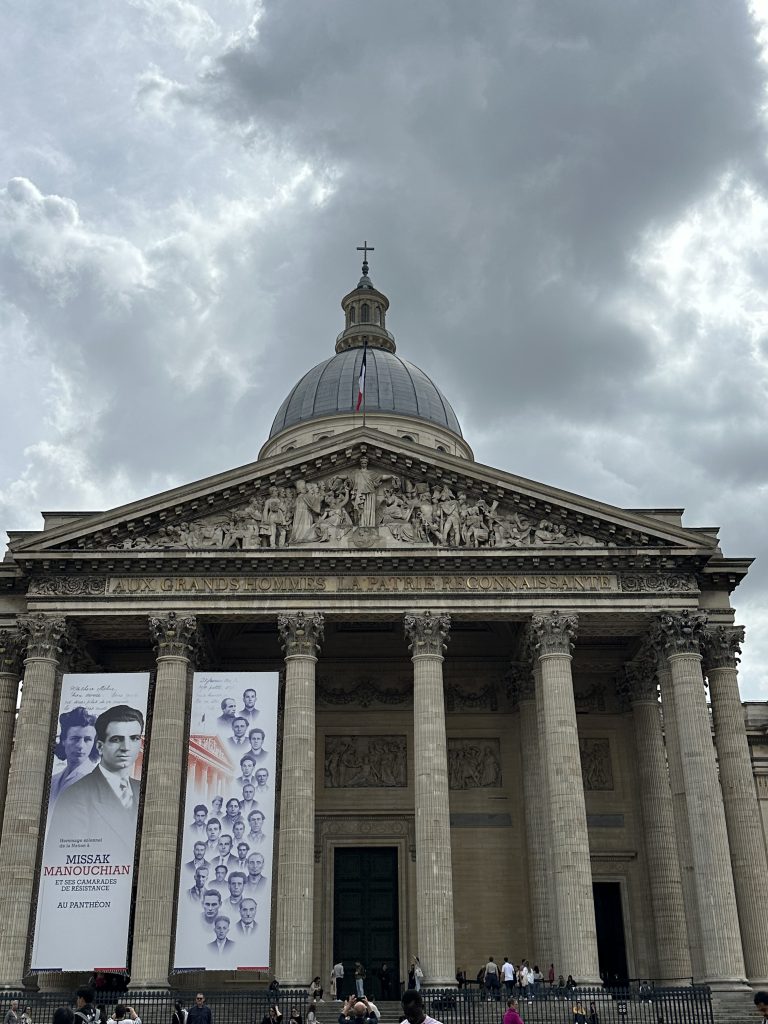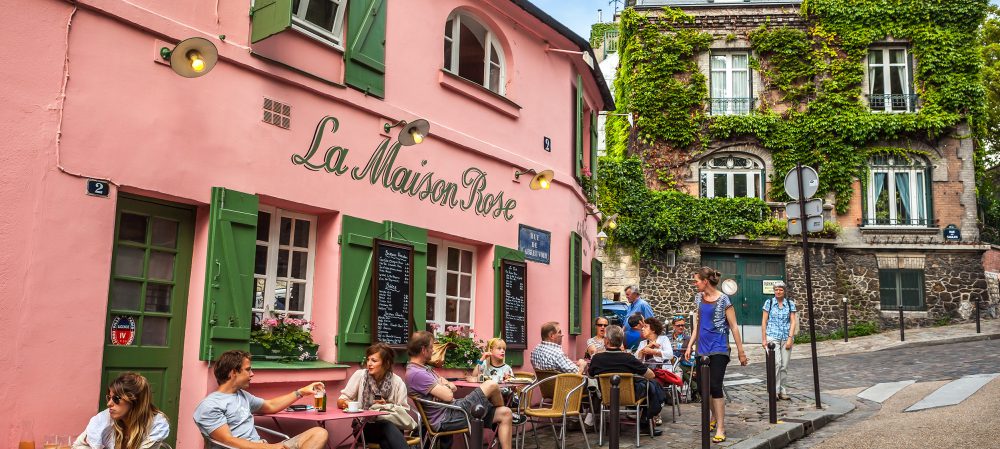After a few informative days, today promised to be even more fun, with a walking tour about American Revolutionaries in Paris and a museum visit on the agenda. We started the day early in the morning, next to the Danton statue, where we met our tour guide. I was excited to find out that the tour would cover a lot about the French Revolution and its history too, especially since the French and American Revolutions were interconnected.

Our first stop was a small street packed with historical significance. We stood near a shop that used to be a printing press, a crucial player in the revolutions. Printing presses were vital as they educated the public and allowed publishers to disseminate their revolutionary ideas. Another key element in both revolutions was the cafe culture. We visited the site of the first cafe in Paris, which opened around 1650 and still operates today. Our tour guide told us how this cafe specifically got famous because of its two entrances. As the majority of people gathering in there were middle-class men, this allowed them to easily escape, if their debtors came to look for them. Cafes provided a space for people to gather, discuss, and debate their ideas. Even back then, people with similar political views would gather at the same cafes. Eventually, each political group had its preferred spot.

Another captivating stop was near the Senate building. It was interesting to discover that the origins of the terms “left-wing” and “right-wing” trace back to the French Senate. In the past, the conservative party occupied the right side of the Senate chamber, while the liberal party sat on the left. This arrangement led to the adoption of these terms to describe political ideologies. Even today, the French Senate keeps this tradition.

Before the French Revolution, France didn’t have a standardized system of measurement. Various units, such as the King’s Feet, were used. However, after the revolution, French people wanted to remove all symbols associated with the monarchy. The meter was defined as one ten-millionth of the distance from the equator to the North Pole along a meridian through Paris. To promote the new metric system, several meter standards were placed in public places. These were physical representations of the meter to help familiarize the population with the new measurement.

To end the tour, we went to the Pantheon. Originally built as a church dedicated to St. Genevieve, the Pantheon was later repurposed as a mausoleum for France’s most distinguished citizens. As an Armenian, I was proud to see a big poster of Missak Manouchian hanging in front of the Pantheon, whose reburial there took place just a few months ago. He was a resistance leader during World War II, leading the famous Manouchian Group, a French Resistance network in Nazi-occupied France. He was captured by the Nazis and executed in 1944. As we continued to explore, our tour guide told us about other luminaries, including Voltaire, Marie Curie, and Victor Hugo, who found their final resting place in the Pantheon. The stories of these great minds and their contributions to society were truly inspiring.

The second half of the day was in the Musée Orsay. When we entered the museum, even the building itself amazed me already. It was originally built to be a railway station in the 1900s to accommodate the high demand of people traveling in Paris. Later it became one of the city’s most iconic cultural landmarks. Our tour focused on the transition to Impressionism which brought a new perspective to the art world. As we explored the galleries, our guide told us about Impressionist artists such as Monet, Renoir, and Degas. Their paintings captured the essence of the everyday life of ordinary people. The highlights of our visit for me were the iconic works of Van Gogh and learning about his unique painting style. His bold colors and dramatic brushwork left a lasting impression on me.

After getting some rest from all the walking we did throughout the day, my roommate and I decided to head to the Republique metro station for dinner. We found a cozy little bistro with outdoor seating. As we enjoyed our meal french meal, we couldn’t help but soak in the vibrant atmosphere of the area. Even late into the evening, the streets were alive with Parisians and tourists alike, all enjoying the warm night. The distant sound of street musicians added a nice touch to our evening. This experience made it the perfect end to my day.
